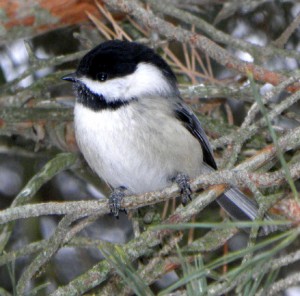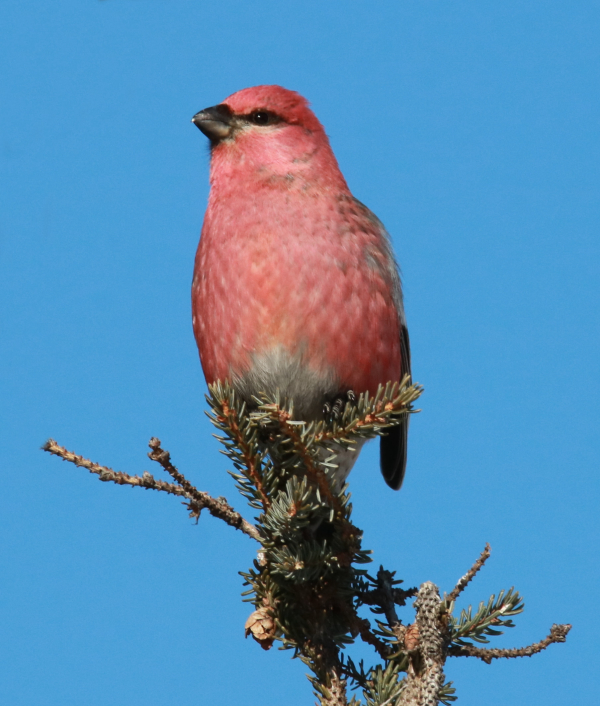Chickadee: Tiny and Tough
By Glen Wunderlich
A most popular bird across the northern United States and southern Canada is the black-capped chickadee. Weighing a scant one-half ounce, its acrobatic behavior and friendly demeanor make it one of the favorites at feeders everywhere.
These tough little critters don’t migrate and when Mother Nature bears down on us all with sub-zero temperatures, mere survival is a testament to their fortitude. Imagine going to bed and waking to find that you’ve lost 70 percent of your body weight; waking up would be miracle enough!
But, the little chickadee is up at the crack of dawn in search of some food that it can turn into energy. However, unlike blue jays and mourning doves, for example, the chickadee does not fill its craw with seed and carry it away. Rather, it can be seen taking a single sunflower seed and darting off. One begins to wonder just how much energy is burned up navigating the air space back and forth and if all the work is worth the effort.
They’ll eat as much as 20 times more food in the winter than in the summertime. Accordingly, providing various forms of feed such as seeds, suet, peanut butter, and mealworms may be just what keeps them going. Supplemental feeding can more than double the survival rate of the feathered foragers from 32 to 69 percent.
My daily routine includes a trip to a galvanized trash can turned seed-storage container each morning. There, the lid is removed and a scoop of seed is taken to refill feed stations. My feathered friends begin to gather in the overhead branches of conifers, as the can’s contents are exposed to the peering eyes of inquisitive onlookers. Before I return with the empty scoop, the little creatures are helping themselves right from the open can.
If they are not present, a little whistling seems to elicit a response for them to come near. Although I’ve hand-fed them at times, most of them will wait for me to back away a few feet before they fly in for some fast food.
At times, they seem oblivious to humans. I’ve had them land on my boots, while deer hunting but one particular experience always comes to mind, while recalling their fearless antics.
Deer hunting in Charlevoix County, I spotted a whitetail buck among a stand of pines, but had only seen it for an instant before it vanished into cover. Within a minute or so, a hunting partner emerged from the same trees and I got his attention in an attempt to alert him to what I had seen. With my fingers stretched apart to imitate antlers, I placed both hands on my head to signify that I had spotted a buck. I dared not speak so as not to frighten the hidden deer and pointed to where I had seen the legal buck. My hunting partner pulled his rifle to the ready position, when a chickadee found a perfect perch on which to land: the muzzle of the gun’s barrel completely blocking the front sight. The hopeful hunter gave the gun a few quick shakes, but the bird held tight. There was nothing we could do but laugh.
If there’s a youngster in your midst, introducing him or her to the wonders of wildlife can be facilitated through these cooperative creatures – and, you can leave the binoculars home.







